 |
 |
 |
 |
 |
 |
 |
Misa de Diálogo - CXX
Los progresistas promueven
el anticlericalismo en la Iglesia
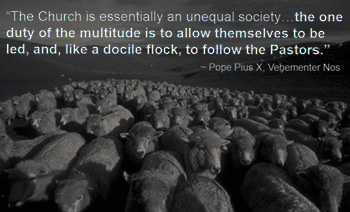
La Iglesia es esencialmente una sociedad desigual... el único deber de la multitud es dejarse llevar y, como un rebaño dócil, seguir a los Pastores.
Los progresistas ridiculizan las palabras del Papa San Pío X
La prueba de ello se encuentra ampliamente en las siguientes opiniones expresadas por destacados miembros del Establishment Liberal que muestran dos rasgos principales. Primero, lo que nos llama la atención en estas citas es que el sacerdote católico tradicional, es decir, uno que se opone a la agenda progresista de los reformadores, siempre recibe un trato perjudicial, como un "tóxico", "malvado", influencia “destructiva”, “pecaminosa”, “misógina” y “opresiva” en la Iglesia.
En segundo lugar, no podemos dejar de notar que el tema de la dominación de clase atraviesa todas estas acusaciones como un leitmotiv marxista, lo que lleva a los llamados a un cambio estructural en la Iglesia para erradicar el clero “ elitista” y dar rienda suelta a los laicos. Algunos ejemplos ilustrarán el punto.
Padre Donal O'Sullivan CSSP
En 1988, el p. Donal O'Sullivan, un espiritano irlandés, quien una vez fue Asistente del Superior General de los Padres del Espíritu Santo en África de 1968 a 1974, (1) publicó una diatriba contra el "clericalismo" titulada "El problema del clero y los laicos". La idea central del artículo fue un ataque a la estructura jerárquica de la Iglesia, y se expresó en tonos duros, incluso vituperadores, de los cuales este extracto es un ejemplo:

Santo Espíritu, el padre O'Sullivan deplora el sólido trabajo misionero de la Orden con la tribu Igbo en Nigeria
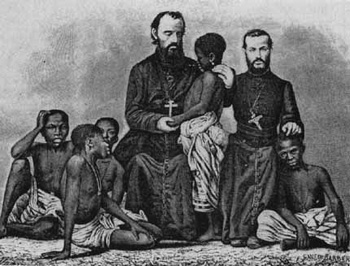
Así que ahí tenemos el catalizador para todas las revoluciones de inspiración marxista: las masas están oprimidas por unos pocos detentadores del poder y necesitan liberarse de sus cadenas de dependencia. Su “pasividad” a este respecto equivale al “opio del pueblo” de Marx.
El P. O'Sullivan fue un partidario leal de las reformas del Vaticano II, particularmente de su nueva teología de las Misiones. En 2007, publicó un libro con el revelador título: Convertir al convertidor: la espiritualidad africana inspira a un misionero irlandés. (3) En la Introducción, muestra cómo el Vaticano II lo ayudó a repensar su fe en 1965 cuando les dijo a los misioneros que respetaran las religiones ancestrales de aquellos a quienes buscó evangelizar.
En particular, deplora las actividades misioneras de los Padres del Espíritu Santo en Nigeria entre la tribu Igbo por intentar instruirlos en la doctrina católica tradicional:
“Al intentar enseñar a los igbo que había un solo Dios que daba vida a todas las tribus y naciones de la tierra, nosotros, los misioneros, alteramos su relación de fe con ese Dios... contradecía el elemento central de sus creencias ”. (4)
Como todos los revolucionarios anticlericales, el padre O'Sullivan desacreditó al sacerdocio para incitar a la indignación y rebelión contra él. Según el Registro del Generalato de su Orden, dejó la Congregación en el año 2000.
Dr. Paul Lakeland, exjesuita
Dr. Lakeland, de la Universidad de Fairfield en Connecticut, quien dejó el sacerdocio para casarse, afirmó que los laicos católicos son víctimas de la “opresión estructural” (5) causada por el clericalismo colectivo que opera dentro del sistema de la “pirámide de poder”.

Exjesuita de Lakeland: 'El sacerdocio bautismal es la posición predeterminada'
Él creía que cualquier laico puede desempeñar el papel de liderazgo de un sacerdote ordenado. Para hacer su punto más explícito, Lakeland ridiculizó la doctrina de que se le confiere un carácter indeleble a un sacerdote en el momento de la ordenación, alegando que esta “teología no es útil y se encuentra en el corazón de los males del clericalismo”. (6)
P. Paul Philibert OP
P. Philibert, un destacado teólogo dominicano y seguidor de Marie-Dominique Chenu e Yves Congar, escribió que la Iglesia debe combatir “las tendencias clericalizadoras de las élites ministeriales”. (7) No se debe pasar por alto la ironía de esta afirmación. Si bien el Vaticano II rechazó cualquier asociación con la “Iglesia Militante”, claramente fomentó un enfoque combativo entre los reformadores para cambiar las estructuras institucionales.
P. Tomas Doyle
El P. Doyle habló en una línea similar cuando mencionó la existencia de “una aristocracia clerical” en la Iglesia que, dijo, necesitaba ser desafiada:
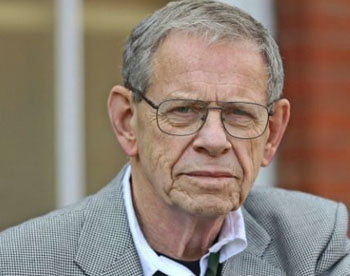
Padre Doyle: 'Debemos desafiar a la aristocracia clerical en la Iglesia'
El padre Doyle logró la simpatía del público por su defensa de las víctimas del abuso clerical, pero su trabajo en esta área fue una tapadera para su objetivo radical de destruir las estructuras institucionales de la Iglesia. Su currículum (disponible en línea) contiene toda la panoplia de sus actividades anticatólicas y muestra la naturaleza marxista-leninista de sus disertaciones académicas: 'Teoría de la revolución social de Vladimir Lenin' y 'Teología de la liberación en el contexto de las necesidades sociales en América del Sur'.
El P. Doyle también escribió Camaradas en la revolución: Diálogo cristiano-marxista, (9) en el que aboga por una “revolución desde abajo” contra el cristianismo “institucionalizado”.
P. Donald Cozzens
P. Cozzens, profesor de teología en la Universidad John Carroll, describe el clericalismo como “una actitud que se encuentra en muchos clérigos que anteponen su condición de sacerdotes y obispos a su condición de discípulos bautizados de Jesucristo”.
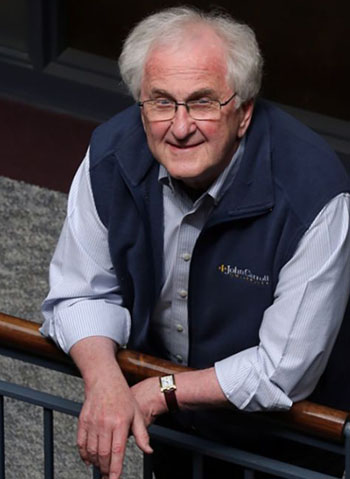
Padre Cozzens acusó a los sacerdotes de trastornos mentales debido a su sentido de 'privilegio y derecho'
El padre Cozzens reveló que su análisis del sacerdocio se derivó de la "perspectiva de la psicología freudiana y junguiana" (10) y llegó a la conclusión de que los sacerdotes que tienen su ordenación en alta estima están psicológicamente desequilibrados:
“Al hacerlo, surge un sentido de privilegio y derecho en su psique individual y colectiva. Esto, a su vez, genera un cuerpo de élites eclesiásticas que piensan que son diferentes al resto de los fieles”. (11)
Pero su "privilegio y derecho" se basan objetivamente en los poderes del sacerdocio que se les confiere en la ordenación. Tampoco es una cuestión de egoísmo inflado: la Iglesia siempre ha enseñado que los sacerdotes son “esencialmente diferentes” de los laicos, por lo que con respecto a su ordenación son “diferentes al resto de los fieles”.
P. Robert Duggan
El P. Robert Duggan, párroco y organizador de talleres para planificadores de liturgia, expresó sentimientos similares:
“El clericalismo es un pecado que traiciona la unidad de la Iglesia que pretendía Jesús al crear la ilusión de que los sacerdotes y el pueblo se encuentran en dos niveles separados, y el clero, por supuesto, se presenta como superior a los laicos. Esta mentira traiciona el verdadero misterio de la Iglesia”. (12)
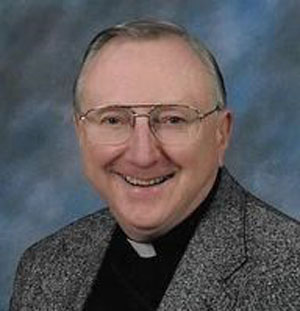
Padre Duggins: La Iglesia como 'sociedad de desiguales' debe desaparecer
“Dentro del pueblo, no existe una doble clasificación de cristianos, laicos y clérigos, esencialmente diferentes. Desaparece la Iglesia como ‘sociedad de desiguales’: No hay, pues, en Cristo y en la Iglesia ninguna desigualdad (Lumen Gentium 12, 32)». (13)
No pasemos por alto la prestidigitación practicada por los reformadores que sustituyen la clasificación tradicional por otra desigual de dos niveles en la que el Bautismo es más importante que la Ordenación, el ministerio laico que el sacerdocio sacramental. No es otro que el viejo y gastado cliché del “triángulo invertido”.
En cuanto a ese otro lema mencionado por el padre Duggan, el "Misterio de la Iglesia", debemos tener en cuenta que este fue el título de la primera sección de Lumen gentium. Tiene una historia interesante, ya que fue utilizado por los reformadores progresistas durante los debates previos al Vaticano II sobre la Constitución de la Iglesia para reemplazar el título del esquema original que era “La Iglesia Militante”.
Continuará ...
- El Superior General era el P. Joseph Lécuyer, elegido en 1968.
- D. Vincent O'Sullivan CSSp, 'El problema del clero y los laicos', The Furrow, vol. 39, núm. 1, enero de 1988, pág. 33
- Dublín: Pigeonhouse Books, 2007
- Ibíd., pág. 6
- Paul Lakeland, La liberación de los laicos: en busca de una iglesia responsable, Nueva York: Continuum, 2003, p. 194
- Paul Lakeland, '¿Qué podría haber comenzado con 'Praedicate Evangelium'?' Commonwealth, 6 de mayo de 2022
- Paul Philibert OP, El sacerdocio de los fieles: clave para una iglesia viva, Prensa litúrgica, 2005, p. 16
- Sarah Mac Donald, 'abogada canonista 'aterrorizada' por los jóvenes seminaristas conservadores', La tableta, 3 de febrero de 2022
- Dayton: Pflaume Press, 1969
- Donald Cozzens, El rostro cambiante del sacerdocio, Collegeville, Liturgical Press, 2000, p. viii
- Donald Cozzens, 'Don't Put Priests on a Pedestal', US Catholic, octubre de 2015, 33–35
- Fr Robert D. Duggan, 'From Your Pastor', (Carta del 6 de junio de 2002 a los feligreses de la Parroquia St. Rose of Lima en Gaithersburg, Maryland), En la viña, julio de 2004, vol. 3, Número 7
- Cardenal Óscar Andrés Rodríguez Maradiaga SDB, Arzobispo de Tegucigalpa, de su discurso pronunciado en la Conferencia Ministerial de la Universidad de Dallas el 25 de octubre de 2013
 Volume I |
 Volume II |
 Volume III |
 Volume IV |
 Volume V |
 Volume VI |
 Volume VII |
 Volume VIII |
 Volume IX |
 Volume X |
 Volume XI |
 Special Edition |



